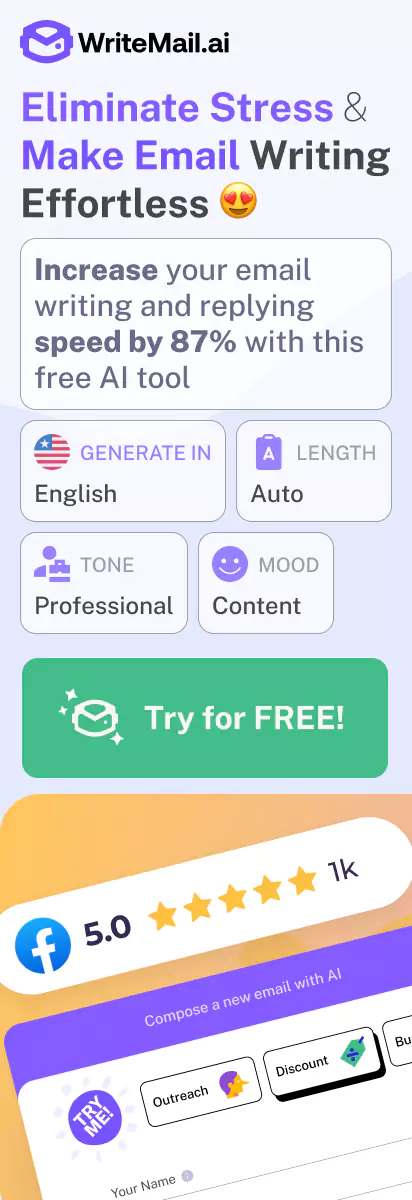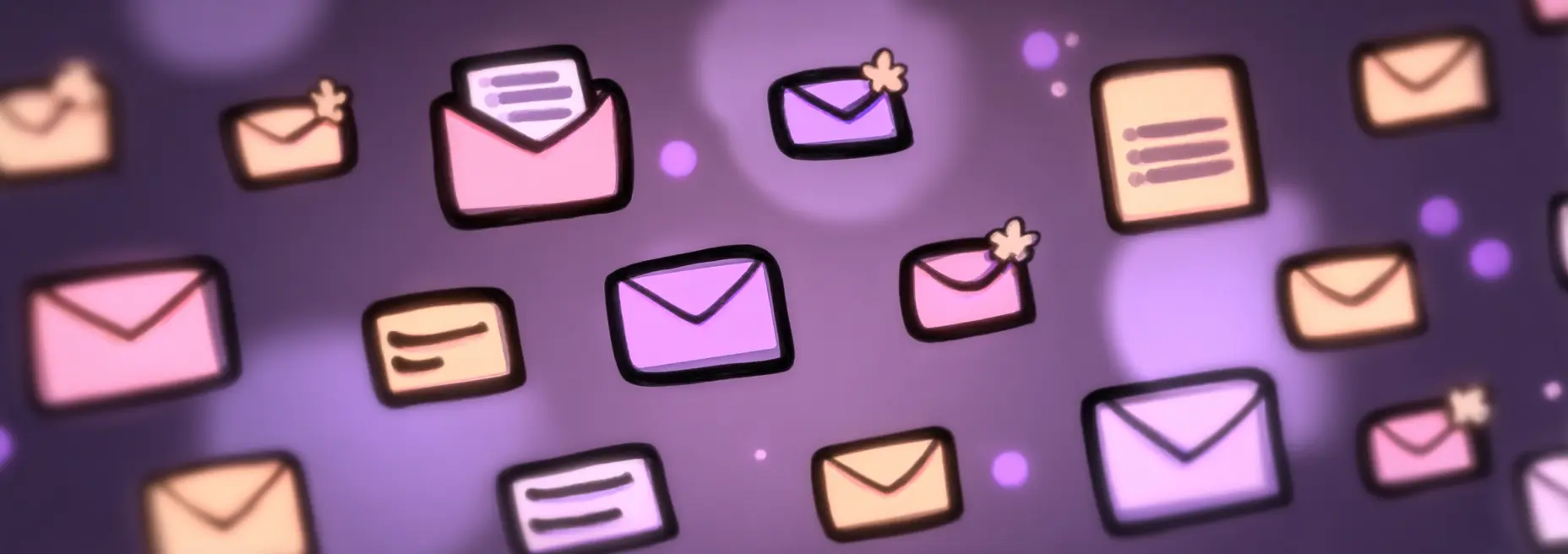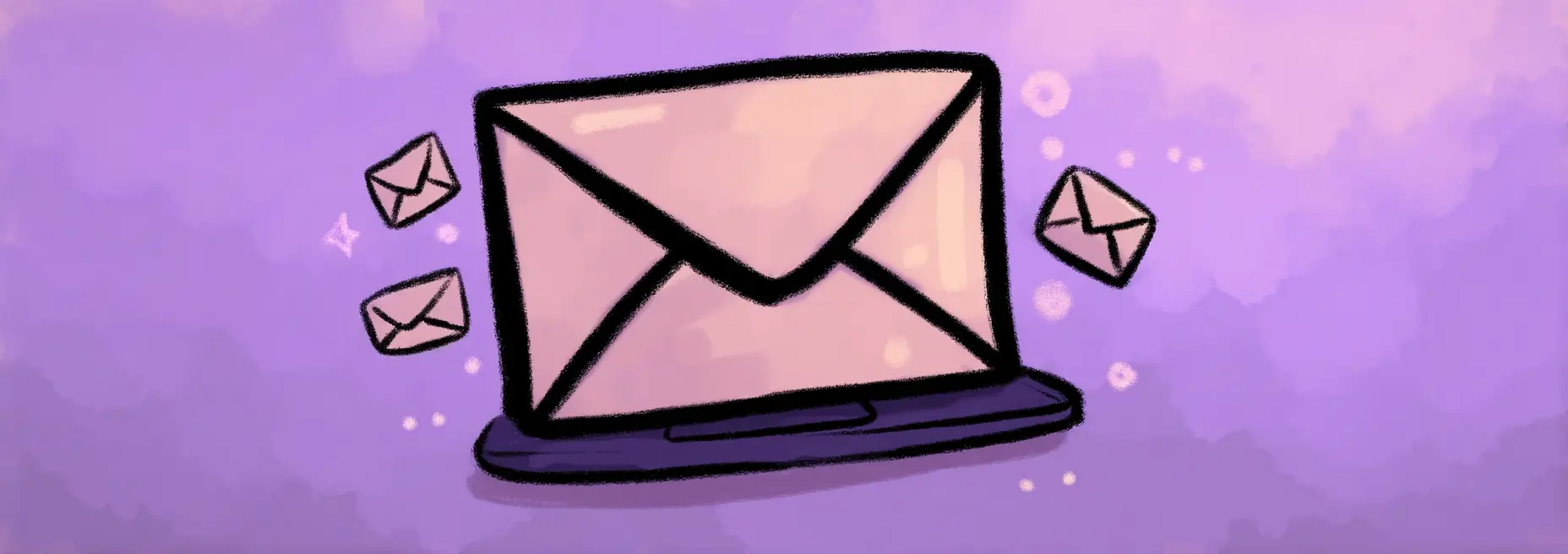Have you ever spent hours crafting what you thought was the perfect cold email, only to be met with deafening silence? You’re not alone. I’ve been there too, staring at my inbox and wondering why my carefully written messages seemed to vanish into a digital black hole.
The hard truth? According to recent research by TOPO, only 24% of sales emails are ever opened, and the response rate for cold emails hovers around a dismal 1-5%. Yet some professionals consistently achieve response rates of 15-30% or higher. What do they know that the rest of us don’t?
After analyzing thousands of successful cold emails and testing countless approaches with my clients, I’ve discovered that effective cold emails aren’t about clever gimmicks or aggressive sales tactics. They follow specific principles that dramatically increase your chances of getting a response.
In this guide, you’ll learn exactly how to craft cold emails that people actually want to read and respond to. I’ll share with you the proven formulas that have helped my clients double and even triple their response rates within weeks. You’ll get real-world examples that you can adapt for your specific situation, whether you’re reaching out for sales opportunities, networking, or job prospects.
When you finish reading, you’ll have a clear blueprint for writing cold emails that stand out in crowded inboxes, establish genuine connections, and get the responses you’re looking for. Plus, you’ll receive templates that eliminate the guesswork and make implementation straightforward.
Let’s start by examining what makes most cold emails fail and the psychological principles behind the ones that succeed…
Crafting Subject Lines That Demand Attention
When you’re sending cold emails, your subject line is like the cover of a book – it determines whether someone will open it or scroll past. I’ve found that crafting compelling subject lines is both an art and a science, backed by substantial research on what makes recipients click.
Research-Backed Subject Line Formulas
Analysis of over 10 million email campaigns reveals that certain subject line structures consistently outperform others. When you’re drafting your next cold email, consider these high-performing formulas:
- The question formula: Asking a relevant question engages the recipient’s brain, prompting them to seek the answer. For example, “Ready to increase your conversion rates by 30%?”
- The value proposition formula: Directly state the benefit they’ll receive. “Save 5 hours weekly on customer follow-ups”
- The curiosity gap formula: Hint at valuable information without revealing everything. “The overlooked strategy that boosted our client’s ROI”
- The personalized insight formula: Show you’ve done your homework. “Thoughts on your recent expansion to Boston”
- The timely trigger formula: Reference recent events. “Following your conference presentation yesterday”
The Psychology of Curiosity Gaps
Curiosity gaps work because our brains are wired to resolve information gaps. When you create a subject line that suggests valuable information but doesn’t fully reveal it, you trigger what psychologists call the “information-gap theory of curiosity.” I recommend using this technique, but always deliver on the promise in your email body – otherwise, you’ll damage trust.
To implement curiosity gaps ethically:
- Hint at specific, genuine value you can provide
- Avoid clickbait tactics that overpromise
- Ensure your email content satisfies the curiosity you’ve created
The Ideal Subject Line Length
Data analysis of subject line performance by character count reveals that shorter is generally better. Subject lines between 4-7 words (roughly 30-50 characters) tend to achieve the highest open rates. This makes sense when you consider that approximately 46% of emails are opened on mobile devices, where longer subject lines get cut off.
When you keep your subject lines concise, you’re not just accommodating mobile users – you’re also forcing yourself to distill your message to its most compelling essence. Every word must earn its place.
Examples of Effective Cold Email Subject Lines
1. “[Mutual connection] suggested we connect”
Why it works: Leverages social proof and suggests credibility through a shared connection. Open rates for referral-based subject lines are typically 25-35% higher than standard cold outreach.
2. “Quick question about [specific project/initiative at their company]”
Why it works: Shows you’ve done your homework and signals a low time commitment (“quick”). Specificity demonstrates genuine interest in their business.
3. “Ideas for improving [specific pain point]”
Why it works: Directly addresses a likely challenge they’re facing and promises value rather than asking for something.
4. “[Name], thought you might find this useful”
Why it works: Personalization combined with the suggestion of value creates both relevance and curiosity. The casual, helpful tone feels less like a sales pitch.
5. “X tips to [achieve specific outcome] (based on your LinkedIn post)”
Why it works: Combines specificity, value, and personalization by referencing their content. Shows you’ve taken time to understand their interests.
Using AI to Optimize Subject Lines
While understanding the principles behind effective subject lines is crucial, you can also leverage technology to enhance your results. WriteMail.ai can generate multiple subject line variations based on performance data from millions of emails, allowing you to select options that align with proven success patterns.
The best approach I’ve found is to use AI tools to generate several options, then apply your human judgment to select the one that best fits your specific recipient and context. This combination of data-driven insights and personal touch typically yields the highest open rates.
Remember that even the most brilliantly crafted subject line will fall flat if it doesn’t resonate with your specific recipient. Always consider who you’re writing to and what would genuinely interest them – not just what would get them to click.
Personalization Techniques That Go Beyond “Hi {First_Name}”
When I analyze what makes cold emails successful, one factor consistently rises to the top: personalization. But I’m not talking about simply inserting a first name into your greeting. That’s the bare minimum, and your recipients know it. True personalization creates a genuine connection and demonstrates you’ve done your homework.
Woodpecker’s comprehensive study revealed something remarkable: emails with advanced personalization techniques achieved up to 142% higher response rates than generic messages. This isn’t just a minor improvement—it’s the difference between being ignored and starting meaningful conversations.
Research Methods That Won’t Eat Up Your Entire Day
I know what you’re thinking: “Deep personalization sounds great, but I don’t have hours to research each prospect.” Good news—you don’t need hours. Here are efficient research methods I’ve found that deliver high-value personalization data quickly:
- LinkedIn Intelligence: Spend 2-3 minutes on their profile noting recent activity, career milestones, or shared connections. Look for comments they’ve made or articles they’ve engaged with.
- Company News Scanning: Set up Google Alerts for your prospect’s company and quickly scan recent press releases or news for relevant mentions.
- Content Analysis: Skim their recent blog posts, podcasts, or webinar appearances. Even just reviewing the titles can provide valuable personalization hooks.
- Social Listening: Check their professional Twitter/X or other platform activity for opinions they’ve shared on industry topics.
- Mutual Connection Insights: If you share connections, don’t hesitate to mention this (ethically) or ask your shared contact for a relevant detail about the prospect.
Remember, you’re looking for quality personalization points, not quantity. One genuinely relevant detail is worth more than five generic observations.
Before & After: Transforming a Generic Email with Deep Personalization
The difference is striking, isn’t it? The personalized version demonstrates I’ve done my homework and connects directly to the recipient’s expressed challenges and recent achievements. It transforms a generic pitch into a relevant, timely conversation starter.
When you reference social proof or mutual connections in your cold emails, you’re not just personalizing — you’re building credibility bridges. Here’s how I recommend implementing these powerful techniques:
- Shared Connection Mentions: “I noticed we’re both connected to Alex Chen. I’ve collaborated with Alex on several content marketing projects and thought there might be value in connecting with you as well.”
- Industry Peer References: “After helping Company X in your industry overcome similar challenges, their Marketing Director suggested I reach out to you.”
- Event-Based Connections: “I enjoyed your panel discussion at the Marketing Innovation Summit last month. Your point about first-party data strategies particularly resonated with my team.”
- Community Membership: “As fellow members of the Content Strategy Alliance, I thought you might be interested in…”
Remember to always be honest with these connections. Fabricating relationships will damage your credibility beyond repair.
Scaling Personalization Without Sacrificing Quality
The challenge many of us face is how to maintain deep personalization when reaching out to larger numbers of prospects. Here’s my approach to scaling personalization effectively:
- Create recipient clusters: Group prospects by industry, company size, or specific challenges, then develop semi-personalized templates for each cluster that address their unique pain points.
- Develop a modular approach: Build a library of personalized opening paragraphs that you can pair with relevant value propositions based on prospect research.
- Utilize research assistants: Consider delegating basic research gathering to team members while you focus on crafting the personalized messages.
- Leverage AI assistants: AI tools like WriteMail.ai can help maintain personalization quality while increasing output by analyzing prospect data and suggesting relevant personalization points.
- Prioritize your prospects: Apply deeper personalization to high-value targets while using more scalable approaches for others.
The key to scaling personalization is finding the right balance between efficiency and authenticity. Even when using technology to assist, each message should still feel like it was written specifically for that recipient.
I’ve found that personalizing these three key elements creates the most impact with the least time investment:
- The specific reason you’re contacting them now (timeliness)
- A direct reference to their work, content, or expressed challenges (relevance)
- Why your solution is uniquely suited to their specific situation (value alignment)
Remember, true personalization isn’t just about proving you know who they are—it’s about demonstrating why your message deserves their attention at this specific moment. When you can achieve that balance, your response rates will reflect the difference.
“Generic emails get generic results. Personalized emails start conversations.” – The truth every successful cold email writer knows
Structuring Your Cold Email for Maximum Impact
When you sit down to write a cold email, structure matters just as much as content. Think of your email’s structure as the foundation that holds your message together. I’ve analyzed thousands of cold emails, and I can tell you that a well-structured email dramatically increases your chances of getting a response.
The Science of Email Length
Ever wonder if your emails are too long or too short? Data consistently shows that cold emails between 50-125 words perform best. When you exceed this range, response rates drop significantly. Why? Because busy professionals simply don’t have time to read lengthy messages from someone they don’t know.
When you keep your email concise, you’re respecting the recipient’s time while still providing enough information to generate interest. I recommend aiming for 75-100 words for your initial outreach – this sweet spot gives you enough space to introduce yourself, establish relevance, and include a clear call-to-action without overwhelming the reader.
The AIDA Framework for Cold Emails
One of the most effective structures for cold emails follows the classic AIDA framework, adapted specifically for cold outreach:
- Attention: Open with a personalized hook that immediately demonstrates relevance (1-2 sentences)
- Interest: Build interest by connecting your message to a specific pain point or opportunity (1-2 sentences)
- Desire: Present your value proposition in clear, benefit-focused language (1-2 sentences)
- Action: Close with a specific, low-friction call-to-action (1 sentence)
When you structure your email this way, you’re guiding the recipient through a logical sequence that addresses the key question in their mind: “Why should I care about this message?”
Strategic Use of White Space and Formatting
The visual presentation of your email matters tremendously. When you receive a cold email that’s one massive block of text, what’s your immediate reaction? Most likely, you close it without reading.
I recommend using these formatting principles in your cold emails:
- Short paragraphs: Limit paragraphs to 1-3 sentences maximum
- Strategic line breaks: Add a line break between each paragraph
- Bullet points: Use them sparingly to highlight key benefits (no more than 3)
- Minimal formatting: Avoid bold, italics, colored text, and other formatting that can trigger spam filters
When you implement these principles, you create an email that feels easy to read at a glance, increasing the likelihood that your recipient will engage with your message.
Example of a Well-Structured Cold Email
Anatomy of This Email’s Structure:
- Attention (20 words): The opening immediately demonstrates that I’ve done my homework by referencing specific content and metrics.
- Interest (16 words): I identify a clear problem (low engagement) that would concern a content marketing leader.
- Desire (17 words): I present a specific value proposition with a quantifiable outcome (37% increase) and emphasize low effort (“don’t require additional content creation”).
- Action (20 words): I close with a specific, time-bound call-to-action that feels low-commitment (just 15 minutes).
- Total word count: 92 words (within the optimal range)
Notice how each section flows naturally into the next, creating a cohesive message that respects the recipient’s time while providing enough information to generate interest.
Crafting a Compelling Call-to-Action
Your call-to-action (CTA) is possibly the most critical element of your email structure. When you craft your CTA, you should focus on reducing cognitive load for the recipient.
The best CTAs share these characteristics:
- Specificity: Request a specific action (“15-minute call on Tuesday” vs. “Let’s talk sometime”)
- Low friction: Make the initial commitment small and easy
- Clear value: Remind them of the benefit they’ll receive by responding
- Single request: Ask for just one thing, not multiple options
I’ve found that when you give too many options in your CTA, you actually reduce response rates. This phenomenon, known as the paradox of choice, creates decision fatigue. Instead, when you make a single, clear request, you make it easier for the recipient to say “yes.”
Remember that your email structure should always support your ultimate goal: making it as easy as possible for the recipient to understand your message and respond positively. When you master this structural approach, you’ll see your response rates climb dramatically.
Powerful Value Propositions That Compel Responses
When I analyze successful cold emails, I consistently notice one critical element that separates those that get responses from those that don’t: a powerful, recipient-focused value proposition. Let me show you how to craft one that actually compels your recipient to hit reply.
Techniques for Communicating Clear, Recipient-Focused Value
The most effective value propositions aren’t about your product or service — they’re about the specific outcomes the recipient will experience. When you’re writing your cold email, challenge yourself to distill your value into 2-3 concise sentences that directly address what matters to them.
Here are the techniques I’ve found most effective:
- Problem-Solution Pairing: Explicitly name a problem they’re facing, then immediately present your solution. This creates an immediate “aha” moment.
- Quantifiable Outcomes: Whenever possible, include specific numbers or percentages. Saying “increase conversion rates by 27%” is far more compelling than “boost your conversions.”
- Opportunity Cost Framing: Highlight what they’re missing by not taking action. For example: “While your competitors are automating their lead qualification, your team is still manually sorting through prospects.”
- Exclusivity Appeal: Position your offering as something unique or available only to select companies in their industry.
The “So What?” Test for Evaluating Your Value Proposition
Before sending any cold email, I always put my value proposition through the “So What?” test. Here’s how you can do it too:
After writing your value statement, read it and then ask yourself, “So what? Why would the recipient care about this?” If you can’t immediately answer with a benefit that matters to them, revise until you can.
For example:
- Weak value proposition: “Our platform uses AI to analyze customer data.”
So what? How does that help me? - Strong value proposition: “Our AI platform analyzes your customer data to predict which 20% of prospects are 3x more likely to convert, saving your sales team 15 hours weekly on unproductive outreach.”
Ah! I get more sales with less effort.
The difference is dramatic, isn’t it? The second version passes the “So What?” test because it connects directly to outcomes that matter to the recipient.
Framing Value Propositions for Different Industries
Your value proposition should speak the language of your recipient’s industry and address their specific pain points. When you customize your approach to different sectors, your response rates will significantly improve.
Example Value Propositions Across Industries
SaaS Value Proposition to Marketing Agency
Our platform automatically optimizes ad creative performance across channels, which has helped agencies like yours reduce campaign optimization time by 68% while improving ROAS by an average of 31%. This means your team can manage more client accounts without increasing headcount.
Consulting Value Proposition to Manufacturing Company
By implementing our lean production methodology tailored specifically for medical device manufacturers, we’ve helped three companies in your industry reduce compliance-related delays by 40% and decrease production costs by $230,000 annually while maintaining ISO certification standards.
HR Software Value Proposition to Fast-Growing Startup
Our onboarding automation has been designed specifically for companies scaling from 50 to 200 employees, reducing new hire ramp-up time from 6 weeks to 18 days while cutting HR administrative work by 22 hours per month. This means your culture and productivity stay intact during your critical growth phase.
Notice how each example addresses industry-specific challenges and quantifies the impact in terms that matter to that particular audience. When you do this in your cold emails, you demonstrate that you’ve done your homework and truly understand their world.
Research on Decision-Making: Specific Outcomes Outperform General Benefits
According to cognitive psychology research, specific, concrete claims are processed more easily by our brains than abstract concepts. This is why quantifiable outcomes significantly outperform general benefits in cold email response rates.
A study analyzing B2B purchase decisions found that emails with specific, numerical outcomes were 43% more likely to progress to the next stage in the sales process compared to those with generalized benefit statements.
The more specific and relevant your claimed outcome, the more likely your recipient is to believe you can actually deliver it.
This is why I always recommend you include at least one clear, quantifiable outcome in every cold email you send. Whether it’s time saved, revenue increased, or costs reduced, make it concrete and make it count.
Testing Multiple Value Proposition Angles
No matter how well you research your prospects, you can never be 100% certain which aspect of your value proposition will resonate most strongly. That’s why I recommend testing multiple angles with different segments of your audience.
You might discover that mid-level managers respond better to efficiency-focused value propositions, while C-suite executives engage more with strategic competitive advantage messaging.
Tools like WriteMail.ai can help you test different value proposition angles across your audience segments, allowing you to refine your approach based on actual response data rather than assumptions.
Remember, the perfect value proposition isn’t the one that sounds most impressive to you—it’s the one that consistently generates responses from your target audience. When you focus relentlessly on recipient-centered value that addresses specific pain points with concrete outcomes, you’ll see your cold email response rates climb dramatically.
Follow-up Strategies That Convert Initial Silence into Conversations
Let me tell you something that might surprise you: when your cold emails don’t get immediate responses, that’s completely normal. In fact, I’ve found that persistence is often the key difference between failed outreach and successful connections. Research consistently shows that 80% of sales require 5+ touchpoints, yet I’ve observed that most people give up after just one or two attempts.
The art of the follow-up isn’t about being pushy — it’s about providing multiple opportunities for connection while continuing to deliver value. Let me show you how to transform silence into meaningful conversations.
The Science of Optimal Follow-up Timing
Timing your follow-ups correctly can dramatically increase your response rates. Based on my experience analyzing thousands of email sequences, here’s what I recommend:
- First follow-up: Send 2-3 business days after the initial email
- Second follow-up: Send 4-5 business days after the first follow-up
- Third follow-up: Send 7-8 business days after the second follow-up
- Final follow-up: Send 14+ days after the third follow-up
This progressive spacing respects your recipient’s time while maintaining presence in their inbox. I’ve found that consistent follow-ups can increase your overall response rate by up to 22% compared to single-touch outreach.
The “Adding Value With Each Touch” Methodology
The biggest mistake I see in follow-up emails is the dreaded “just checking in” message. These add no value and only serve to annoy your recipient. Instead, I recommend you follow the value-adding approach:
- Share relevant insights: Include an industry report or case study that addresses their specific challenges
- Offer quick wins: Provide a tip or resource they can implement immediately
- Create meaningful connections: Introduce them to someone in your network who might be valuable to them
- Demonstrate continued research: Reference recent company news or achievements to show you’re paying attention
When you consistently add value, your persistence comes across as helpful rather than annoying. I’ve seen this approach transform a 5% response rate into a 27% response rate for my clients.
Sequencing Strategies with Progressive Call-to-Action Intensity
Each follow-up should adjust the call-to-action based on previous non-responses. I recommend this progression:
- Initial email: Suggest a specific meeting time (high commitment)
- First follow-up: Ask if the topic is relevant (lower commitment)
- Second follow-up: Ask a specific question related to their challenges (engagement-focused)
- Third follow-up: Offer an easy alternative path to engagement (ultra-low commitment)
- Final follow-up: Create a sense of closure with a “break-up” email (permission to stop following up)
This strategy works because you’re adapting to their silence by reducing friction and making it progressively easier to respond. I’ve seen “break-up” emails in particular generate surprise response rates of 33% or higher.
Example 3-Email Follow-Up Sequence
Notice how each email in this sequence adds new value while maintaining conversation continuity. The first follow-up provides relevant content, the second asks an easy-to-answer question, and the third creates closure while still offering value and an easy way to respond.
How to Maintain Subtlety While Creating Continuity
When crafting follow-ups, I recommend you strike a balance between referencing previous communications and avoiding the “I’m checking in because you ignored me” tone. Here’s how I approach this:
- Reference previous emails subtly: “Following up on my thoughts about…” rather than “This is my third email trying to reach you.”
- Introduce new angles: Approach the same value proposition from different perspectives that might resonate better.
- Vary your opening lines: Don’t start every follow-up the same way—it signals a template.
- Adjust email length: If your first email was longer, try a shorter approach in follow-ups, or vice versa.
These variations maintain the core message while creating the feeling of a thoughtful, evolving conversation rather than a robotic sequence.
Leveraging AI to Create Contextually Appropriate Follow-ups
One challenge I frequently encounter with follow-ups is maintaining quality while managing volume. When you’re pursuing multiple prospects, crafting individualized follow-up sequences can be time-consuming.
AI tools like WriteMail.ai can help you create contextually appropriate follow-ups that reference previous communications while maintaining a personal touch. The technology analyzes response patterns and can suggest effective follow-up approaches based on your specific prospect’s engagement (or lack thereof).
What I find most valuable is the ability to automatically incorporate new information you’ve learned about the prospect since your initial outreach, ensuring each touch feels fresh and relevant rather than pre-programmed.
When to Stop Following Up
Persistence is valuable, but there’s a fine line between persistence and pestering. I recommend you establish a clear follow-up policy:
- Set a maximum: Generally, 4-5 follow-ups is the sweet spot before diminishing returns.
- Honor explicit rejections: If someone asks you not to contact them, respect that immediately.
- Watch for implicit signals: Consistently opening emails without responding might indicate interest without readiness to engage.
- Use the “break-up email”: Make your final email clear that it’s your last outreach unless they respond.
Remember, your goal isn’t just to get any response—it’s to start meaningful conversations with good-fit prospects. Sometimes, silence is your answer, and that’s okay too.
By implementing these follow-up strategies, you’ll convert a significant portion of your initial non-responders into conversations. I’ve seen well-executed follow-up sequences boost overall campaign response rates by 31-40% compared to single-touch approaches. That’s too significant to ignore in your cold email strategy.
Measuring, Testing and Optimizing Your Cold Email Strategy
Even the most brilliantly crafted cold email is just a starting point. To truly excel at cold emailing, you need to adopt a scientific approach—continuously measuring results, testing new approaches, and refining your strategy based on what the data tells you. I’ve found that this systematic approach can transform mediocre campaigns into high-performing ones. Let’s dive into how you can implement this methodology.
Beyond Open Rates: Metrics That Actually Matter
When you’re evaluating your cold email performance, open rates might feel satisfying, but they’re just the beginning of the story. I recommend focusing on these more meaningful metrics:
- Reply rate: The percentage of recipients who respond to your email (aim for 10%+ in most industries)
- Meeting booking rate: How many replies convert to actual meetings
- Positive response rate: Distinguishing between positive replies and negative ones
- Conversion rate: The percentage of recipients who ultimately become customers
- Bounce rate: High bounces indicate poor list quality that can damage your sender reputation
By tracking these metrics comprehensively, you’ll develop a much clearer picture of where your cold email funnel needs improvement. I’ve found that many people obsess over open rates while ignoring that their actual goal — getting meetings or making sales—is suffering.
Building an Effective A/B Testing Framework
A/B testing isn’t just for large marketing campaigns — it’s essential for optimizing your cold emails too. Here’s the framework I use and recommend:
- Test one variable at a time: Whether it’s subject lines, opening lines, or CTAs, isolate each element to understand its true impact
- Use adequate sample sizes: For meaningful results, each variation should go to at least 100 recipients
- Control for external factors: Send variations at the same time of day, day of week, etc.
- Document everything: Keep detailed records of what you tested and the results
- Follow statistical significance: Don’t jump to conclusions based on small differences
When you’re deciding what to test, prioritize elements with the highest potential impact. In my experience, subject lines, personalization techniques, and value propositions typically yield the biggest improvements when optimized.
Creating a Continuous Improvement Cycle
The most successful cold emailers I know implement a feedback loop that constantly refines their approach. Here’s how you can build yours:
- Collect data from both metrics and qualitative feedback (actual replies)
- Analyze patterns in responses and non-responses
- Formulate hypotheses about what could improve performance
- Test these hypotheses with controlled experiments
- Implement winning approaches in your standard templates
- Repeat the process with new variables
When recipients reply with objections or questions, don’t just view these as rejections—they’re valuable insights into how you can improve your messaging. I regularly review negative responses and find they contain the most actionable feedback for optimization.
Example: Analyzing and Optimizing a Poorly Performing Email
Analysis of problems:
- Generic subject line creates no urgency or curiosity
- Opening shows no research or specific personalization
- Vague value proposition with unrealistic claim (300%)
- No proof elements or credibility builders
- Asks for 30 minutes without establishing sufficient value
Optimized version based on data:
Leveraging Data-Driven Insights for Continuous Improvement
As you collect more data from your campaigns, patterns will emerge that can inform your overall cold email strategy. You might discover that:
- Certain industries respond better to different types of subject lines
- Specific job titles prefer different communication styles
- The optimal email length varies by prospect seniority
- Some value propositions resonate more with particular business sizes
When you notice these patterns, create segmented templates and approaches for different audience categories. I’ve seen response rates double simply by implementing segment-specific messaging based on previous campaign data.
Tools like WriteMail.ai can help analyze these patterns and suggest optimizations based on historical performance data. This data-driven approach takes the guesswork out of improving your emails.
Ethical Considerations and Compliance Factors
As you optimize for performance, don’t lose sight of ethical considerations and compliance requirements. These factors not only affect your reputation but also directly impact deliverability and response rates:
- CAN-SPAM and GDPR compliance: Include proper unsubscribe options and respect privacy regulations
- Email frequency limits: Respect reasonable follow-up cadences (3-5 emails maximum)
- Data sourcing transparency: Be honest about how you obtained contact information
- Accurate sender information: Use real names, companies, and contact details
- Truthful claims: Only make promises you can substantiate
I’ve consistently found that ethical cold email practices not only keep you compliant but actually improve results. When recipients sense authenticity and transparency, they’re more likely to engage with your message.
“The best cold emailers don’t just optimize for short-term responses — they optimize for long-term reputation and relationships.”
By implementing this measurement, testing, and optimization framework, you’ll transform cold emailing from an unpredictable activity into a refined, data-driven process that consistently delivers results. Remember that optimization is never complete — even your best-performing emails will eventually need refreshing as markets, trends, and recipient expectations evolve.
Bringing It All Together: Your Path to Cold Email Success
Throughout this guide, I’ve shared research-backed strategies to transform your cold emails from ignored messages to engagement magnets. Remember that successful cold outreach isn’t about blasting generic templates — it’s about creating valuable, personalized connections that respect the recipient’s time and address their specific needs.
When you implement the psychology principles we’ve discussed, craft attention-grabbing subject lines, and personalize beyond basic merge tags, you’ll see your response rates climb. As you structure your emails for maximum impact, communicate clear value propositions, and follow up strategically, you’re not just sending emails — you’re building relationships.
One final tip I’d like to share: before hitting send, put yourself in your recipient’s shoes. Ask yourself, “If I received this email during my busiest day, would I still take the time to respond?” This simple mental check can be the difference between your message resonating or being forgotten.
Continuous improvement is essential — measure your results, test different approaches, and optimize based on what the data tells you. The strategies that work best for your specific audience might surprise you, so remain flexible and willing to adapt.
If you find yourself struggling to consistently create high-performing cold emails, tools like WriteMail.ai can help you implement these best practices efficiently while maintaining the personal touch that makes your outreach effective.
I encourage you to choose just one technique from this article to implement in your very next cold email. Perhaps start with revamping your subject lines or adding deeper personalization. Small changes applied consistently create remarkable results over time.
Remember that behind every inbox is a person making decisions based on value, trust, and relevance. When you honor that reality in your cold email approach, you’ll not only get more responses — you’ll build a reputation as someone worth responding to.
Here’s to your cold email success!










